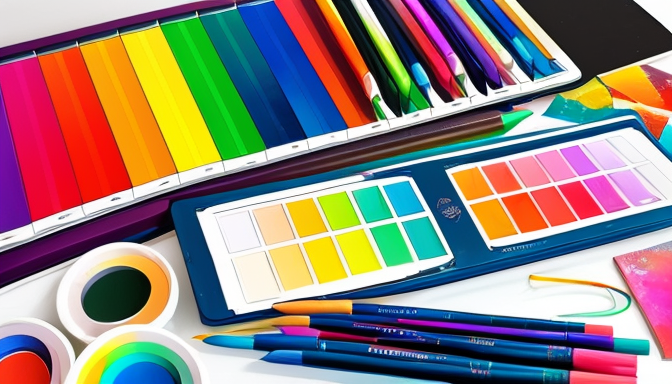This article explores essential design techniques that can elevate your projects, enhance visual appeal, and ensure a cohesive aesthetic. Discover tips and tricks to create stunning designs effortlessly.
Grasping fundamental design principles is crucial for creating visually appealing work. These principles act as the backbone of any successful design, guiding you through the maze of creativity. Think of design principles like the rules of a game; they help you play better and achieve greater results. Key concepts include balance, which ensures that no part of your design feels heavier than another; contrast, which highlights important elements and makes your design pop; and alignment, which creates a sense of order and organization. For instance, imagine a seesaw—if one side is heavier, it tips over. Similarly, your design should maintain a harmonious balance to engage viewers effectively.
Color theory plays a significant role in design, influencing emotions and perceptions. Choosing the right color scheme can be the difference between a design that resonates and one that falls flat. Colors can evoke feelings just like music; a soft blue might calm your nerves, while a vibrant red can ignite passion. To create an impactful palette, consider the following:
- Complementary Colors: Colors opposite each other on the color wheel create dynamic contrast.
- Analogous Colors: Colors next to each other create harmony and unity.
- Monochromatic Schemes: Variations of a single color can create a sophisticated look.
By understanding these color relationships, you can craft designs that not only catch the eye but also resonate deeply with your audience.
Understanding Design Principles
Grasping fundamental design principles is crucial for creating visually appealing work. Think of these principles as the backbone of your design; without them, your projects might feel like a house of cards—unstable and ready to collapse at any moment. Key concepts such as balance, contrast, and alignment not only enhance aesthetics but also guide the viewer’s eye through your design. For instance, balance ensures that no single element overwhelms another, creating a sense of harmony that is pleasing to the eye.
Contrast, on the other hand, adds interest and draws attention to the most important aspects of your design. Consider how a bright color pops against a muted background, or how varying font sizes can create a hierarchy of information. This dynamic interplay is what keeps your audience engaged. Alignment ties everything together, providing a clear structure that makes your design easy to navigate. It’s like the invisible thread that holds your design fabric together.
To deepen your understanding, here are some quick tips:
- Balance: Use symmetrical or asymmetrical layouts depending on the mood you want to convey.
- Contrast: Experiment with colors and sizes to highlight key elements.
- Alignment: Ensure all elements are aligned to create a cohesive look.
By mastering these principles, you’ll not only elevate your projects but also create designs that resonate with your audience. Remember, design is not just about making things look good; it’s about making them work beautifully.

Implementing Color Theory
Color theory is like the secret sauce of design—it’s what makes your projects pop and resonate with your audience. Understanding how colors interact can transform a dull design into something that captivates and communicates effectively. Think of it this way: just as a chef carefully selects ingredients to create a mouth-watering dish, a designer must choose colors that evoke the right emotions and set the mood.
To start, consider the color wheel, which is a visual representation of colors arranged according to their chromatic relationship. This tool helps you understand primary, secondary, and tertiary colors, guiding you in creating harmonious color schemes. Here are some common color schemes you can explore:
- Complementary Colors: Colors opposite each other on the wheel, like blue and orange, create vibrant contrasts that catch the eye.
- Analogous Colors: Colors next to each other, such as blue, blue-green, and green, offer a serene and cohesive look.
- Triadic Colors: Three colors evenly spaced around the wheel, like red, yellow, and blue, provide a balanced yet dynamic palette.
When implementing color theory, it’s also essential to consider the psychological impact of colors. For instance, blue often conveys trust and calmness, while red can evoke passion or urgency. By understanding these associations, you can tailor your designs to better connect with your audience’s emotions. Remember, the right color choices can not only enhance visual appeal but also strengthen your message, making your designs not just seen, but felt.
Frequently Asked Questions
- What are the key design principles I should know?
Understanding the core design principles like balance, contrast, and alignment is essential. These elements work together to create visually appealing and effective designs that communicate your message clearly.
- How can I choose the right color scheme for my project?
Choosing a color scheme involves understanding color theory. Consider your audience’s emotions and preferences. Use tools like color wheels to find complementary colors that enhance your design and create the desired mood.
- What tools can help me with design?
There are numerous tools available! Software like Adobe Illustrator and Canva can help streamline your design process. Additionally, online resources like color scheme generators and typography tools can elevate your work.
- How do I ensure my design is cohesive?
Cohesion in design comes from maintaining consistent elements throughout your project. Use similar colors, fonts, and styles to create a unified look that resonates with your audience.